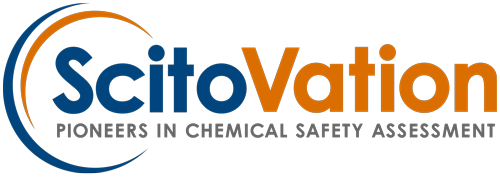Pharmaceutical drug development is time consuming, expensive and for a single clinical candidate can use up to 5,000 animals to meet all FDA safety assessment testing requirements. The time to bring a new chemical entity (NCE) to market has remained at 10+ yrs with the greatest resources of time commitment in early and late discovery. Additionally, the average research and development expenditure is up to 1 billion dollars, during preclinical and clinical studies.1,2 The major factors that result in failure of clinical candidates is toxicity, efficacy and pharmacokinetics. As only about 12% of compounds that enter the discovery process are ultimately approved by the Food and Drug Administration (FDA), better human-relevant screening models need to be implemented earlier to reduce cost.3 Many preclinical compounds are being rejected due to use of inappropriate animal models.4 Here at ScitoVation, we are developing in vitro human-relevant New Approach Methodologies/non-animal methods (NAMs) to assist the pharmaceutical industry to identify potential risk earlier in the drug discovery pipeline to reduce time and cost.
With advancements of in vitro screening models, many features of human specific toxicity can be predicted with genomic studies in human cell models and computational modeling. This allows us to identify off target drug effects, potential toxicity risks, and bioinformatics mode of action much earlier in the overall drug development process. This can be a multifaceted approach including developing cell models that can capture complexities such as permeability, drug-drug interactions as well as a transcriptomics to analyze the effects of drugs at a genetic level.
At ScitoVation our cell-based assay division has developed customized cell lines and models, both 2D and 3D, in relevant human systems such as lung and liver to assess toxicity and efficacy. We have standard assays, but also the capability to custom build models to meet clients’ needs.
Our cell-based assay division works closely with our computational toxicology division. ScitoVation uses cutting-edge toxicogenomic analysis to determine molecular initiating events that lead to adverse effects, as well as inform about compound potency and mode of action.5,6 scitovation.com/in-life-toxicogenomics/
Our computational team are experts in a variety of in silico pharmacokinetic models. Physiologically based pharmacokinetic (PBPK) models can predict compound bioavailability through absorption, distribution, metabolism and excretion (ADME), as well as conduct intra-species extrapolation modeling.7 Through the combined use of in vitro testing and PBPK modeling, ScitoVation can provide a predictive simulation of plasma concentrations, target tissue dosimetry, enzyme-based or transporter drug-drug interaction (DDI) critical determinants of drug safety and bioavailability. scitovation.com/pbpk-modeling/ Furthermore, our scientists can model compound dosimetry using in-vitro-to-in-vivo extrapolation (IVIVE) modeling, providing a quantitative framework for converting in vitro testing values to an equivalent dose to humans.8 scitovation.com/services/technologies/in-vitro-to-in-vivo-extrapolation-ivive/
With the collective knowledge provided by in vitro assays and computational toxicological models, preclinical decision making and risk assessment can occur earlier in the drug discovery pipeline increasing a go forward probability of success.
References
- McKim JM, Jr. Building a tiered approach to in vitro predictive toxicity screening: a focus on assays with in vivo relevance. Comb Chem High Throughput Screen. Feb 2010;13(2):188-206. doi:10.2174/138620710790596736
- Wouters OJ, McKee M, Luyten J. Estimated Research and Development Investment Needed to Bring a New Medicine to Market, 2009-2018. JAMA. Mar 3 2020;323(9):844-853. doi:10.1001/jama.2020.1166
- Austin DaH, T. Research and Development in the Pharmaceutical Industry. Congressional Budget Office. cbo.gov/publication/57126
- Beilmann M, Boonen H, Czich A, et al. Optimizing drug discovery by Investigative Toxicology: Current and future trends. ALTEX. 2019;36(2):289-313. doi:10.14573/altex.1808181
- Black MB, Stern A, Efremenko A, et al. Biological system considerations for application of toxicogenomics in next-generation risk assessment and predictive toxicology. Toxicol In Vitro. Apr 2022;80:105311. doi:10.1016/j.tiv.2022.105311
- Haider S, Black MB, Parks BB, et al. A Qualitative Modeling Approach for Whole Genome Prediction Using High-Throughput Toxicogenomics Data and Pathway-Based Validation. Front Pharmacol. 2018;9:1072. doi:10.3389/fphar.2018.01072
- Mallick P, Song G, Efremenko AY, et al. Physiologically Based Pharmacokinetic Modeling in Risk Assessment: Case Study With Pyrethroids. Toxicol Sci. Aug 1 2020;176(2):460-469. doi:10.1093/toxsci/kfaa070
- Wetmore BA, Wambaugh JF, Allen B, et al. Incorporating High-Throughput Exposure Predictions With Dosimetry-Adjusted In Vitro Bioactivity to Inform Chemical Toxicity Testing. Toxicol Sci. Nov 2015;148(1):121-36. doi:10.1093/toxsci/kfv171
